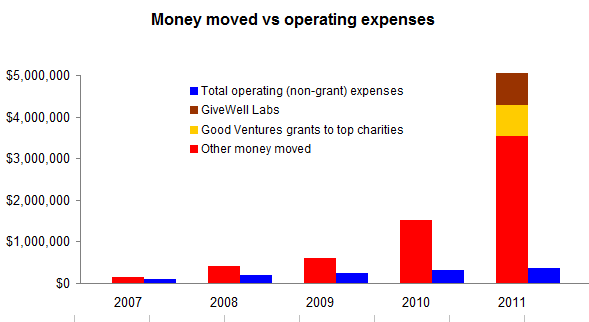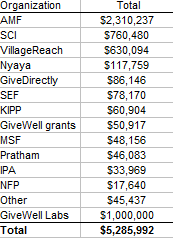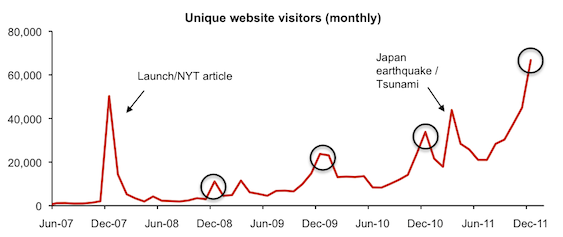This is the fourth post (of six) we’re planning to make focused on our self-evaluation and future plans.
This post answers a set of critical questions for GiveWell stakeholders. The questions are the same as last year’s.
Is GiveWell’s research process “robust,” i.e., can it be continued and maintained without relying on the co-Founders?
Where we stood as of Feb 2011
We had two full-time, non-co-founder employees (analysts), a part-time employee, and plans to hire another in the summer. We wrote that, in total, we expected to have 3.5 analysts by the Fall of 2011.
Progress since Feb 2011
By the summer of 2011, we had 3 full-time analysts and two temporary summer analysts. One of our full-time analysts left in December 2011; we recently hired one of our former summer analysts, bringing us back to 3 full-time analysts.
The analysts have been with us different levels of time, but as they have been at GiveWell longer, each has continued to take on more responsibility.
Where we stand as of February 2012
We currently have 3 full-time analysts, and have made an offer to an analyst who will start in July, which would bring GiveWell to 4 full-time analysts. We continue to focus on recruiting and hope to reach 6 full-time analysts (8 total employees) summer 2012.
Analysts take the lead on most charity investigations; co-founders may provide basic guidance and sign off on work before it is published. GiveWell Labs, because of its experimental nature, will be led for the time being by co-founders.
What we can do to improve
- We continue to experience turnover. Two analysts who worked with us in 2011 have since left GiveWell. We don’t believe that turnover is indicative of a problem – GiveWell is a unique environment that fits some people and not others and we would not be surprised if turnover remains relatively high in the near future. We have tried to address turnover by improving our hiring process to select for the characteristics most likely to lead to success at GiveWell.
- In the past, we have exclusively hired “generalists” i.e., young, largely college-graduates who work on a little bit of everything at GiveWell – e.g., charity reviews, speaking with donors, answering emails, in-depth literature reviews. In the coming year, we plan on putting more thought into hiring people for more specialized roles, such as administration (we now have enough administrative work for a full-time hire) and literature reviews.
Does GiveWell present its research in a way that is likely to be persuasive and impactful (i.e., is GiveWell succeeding at “packaging” its research)?
Where we stood as of Feb 2011
We wrote, “We’re currently satisfied with the presentation of our content and don’t plan on emphasizing this goal in the near future.”
Progress since Feb 2011
None. This was not a priority over the past 12 months.
Where we stand as of February 2012
As traffic to our website has increased over the past 12 months, we would guess that the importance of better packaging our research has risen. In particular, we feel our site is poorly suited to donors who want to spend more than a few minutes but less than an hour on our site. (We have designed the site to make quick action easy and to provide significant depth, but we have no “middle level” of depth for gaining some information relatively quickly.)
What we can do to improve
We have a list of ideas for how to better package our research, and we may prioritize this in 2012. In particular, we are considering putting more work into a “middle level of detail” as described above.





